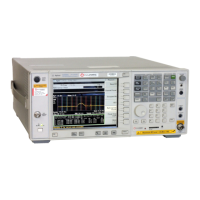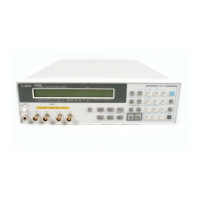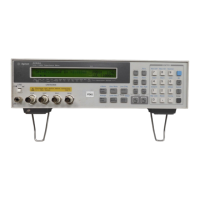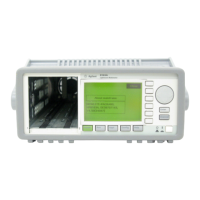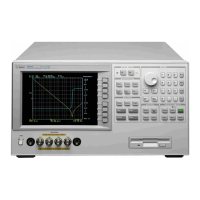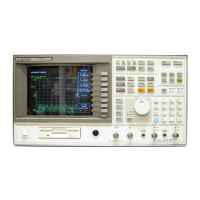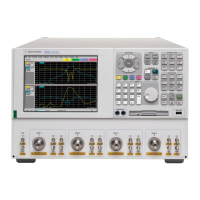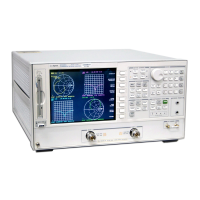Service Guide E8361-90001 3-31
PNA Series Microwave Network Analyzers Tests and Adjustments
E8361A Performance Tests (Agilent N2721A Software Package)
If the Analyzer Fails this Test:
• Repeat this test. There are no adjustments that can be made.
• Since all four receivers are identical, the suspect failed receiver can be swapped with
one of the other receivers to verify that it is faulty. Swap the suspect receiver and repeat
this test. Refer to “Removing and Replacing the A31, A32, A33, and A34 Receiver
Modules and LO Reject Filter Board” on page 7-50.
• If the faulty channel “follows” the receiver, replace the receiver. If the same channel
(now with a different receiver) is still faulty, suspect the associated cabling.
Noise Floor Test
Function of the Test: To measure the absolute power level of the noise floor for the
analyzer’s receivers.
Specification Tested: Test Port Input–Test Port Noise Floor
Equipment Used: A power meter, power sensor, a calibration kit, and a test cable.
Description of the Test:
1. The analyzer is set to various CW frequencies across its frequency range at an IF
bandwidth of 1 kHz and 801 points per sweep.
2. A test cable is connected to the driving port for the measurement and a power sensor is
connected to the other end of the cable.
3. The power level at the end of the cable is set to −5.00 dBm.
4. The power sensor is disconnected and the cable is connected to the port to be tested.
5. The absolute power level in dBm (log magnitude) is read: (P
log
).
6. The test cable is removed and loads are connected to both ports.
7. The analyzer’s trace is set to represent the absolute power level (linear magnitude) for
the receiver under test and a sweep is taken.
8. The mean of the points on the trace, in watts, is read: (P
lin
).
9. Average power in dBm is calculated: P
dBm
=10∗Log10(P
lin
∗1000).
10. Corrected noise floor in dBm for a 10 Hz IF bandwidth = P
dBm
−19.96 dB−(5.00-P
log
).

